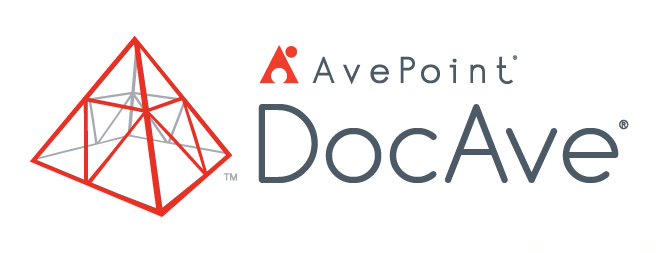How to Master SharePoint Management with DocAve Administrator


Are you an IT administrator looking for more powerful SharePoint and Office 365 management tools? Learn all about DocAve Administrator during our free webinar on September 20th at 11:00 AM EST. Register today!
Further your SharePoint knowledge with these more in-depth articles:
- What Is SharePoint? A Guide For Beginners
- How Does SharePoint Work?
- Learn SharePoint Basics
- 7 Helpful Office 365, SharePoint Customization Best Practices
- 4 Essential Content Management Tips for SharePoint Online
There are many aspects to managing a SharePoint environment. The priorities of organizations generally differ based on how their business users interact with the platform. In any SharePoint environment, however, there are a few basic keys to managing and protecting the content that business users need.
It’s always important to control who has access to sites, lists, libraries and files in any version of SharePoint. This is especially true if any employee or customer personal information is stored in the environment.

Additionally, factors like versioning, site themes and whether permissions are inherited or not can be very important when it comes to managing resource consumption and the user experience in SharePoint and SharePoint Online.
In Office 365, Teams and Groups add additional management/governance challenges along with many more areas to manage. Overseeing the settings and available features in SharePoint-based spaces and the overall security of the environment in Office 365 can also be challenging.
I found this really useful tool for SharePoint and O365 management. Check it outClick To Tweet
How DocAve 6 Administrator Can Help
AvePoint’s DocAve 6 Administrator, a server-based SharePoint and Hybrid Office 365 solution, addresses these challenges head-on. AvePoint provides many set-and-forget controlling features to help administrators and stakeholders more easily manage their environments and get more ROI out of their platforms by providing secure adoption for their end users. Here’s a look at the different features administrators gain access to:

Managing Permissions
Administrators can report on who has access to data at every level in SharePoint, SharePoint Online, Office 365 Groups and Teams. This includes the ability to report on Active Directory Security Groups and their members.
After this report has been generated, you can see the data either via a detailed column list view, as an Excel spreadsheet, or via a GUI that shows the structure of explicit permission for the selected scope.
Blog: 4 Smart Steps for Developing an #Office365 Backup Strategy
You can then change permissions either through the GUI of the solution or by downloading a Config file in the form of an Excel spreadsheet, editing the spreadsheet to make your changes, and then uploading it back into the solution to realize the changes made. The reports will naturally be saved through this process.
These permissions reports can be filtered for users, generated on a schedule, and emailed to different groups of users and exported into SharePoint locations for trimmed access. You can create as many reports for the environment as you would like.

Manage Settings
DocAve 6 Administrator enables a GUI interface that allows for changing settings, enabling features, and reporting on web parts and broken links in SharePoint and Office 365. The capabilities of the SharePoint Administration Center and SharePoint site collection settings can be managed directly from the single pane of glass interface.
Temporary Permissions
Grant temporary permissions for one or many users or groups, with expiration dates and notifications around the granting of permissions.
Clone Permissions
Have multiple users or groups that need the same permissions as another? The DocAve 6 Administrator module allows for the cloning of permissions based on users, groups or locations in SharePoint and Office 365. Permissions and users can be filtered based on several factors, and the security/permissions of many users or groups can be cloned in a single job.

Dead Account Clean-Up
Compare accounts that are active in Active Directory against those that are active in SharePoint and clean up any discrepancies. This includes cloning permissions, mapping user information and deleting users right from within the GUI. Actions can be taken on a schedule so that such changes are made during non-peak hours.
Enforcing Policies and Permissions
DocAve 6 Administrator makes the enforcement of company usage policies for SharePoint and Office 365 a reality. The Policy Enforcer feature of Administrator allows for the implementation of over 50 policy controls for SharePoint (36 for Office 365) that can prevent or revert user actions that violate your policies. This includes actions like permissions changes, the changing of themes and versioning settings, and enabling the control of permissions inheritance for scopes anywhere in SharePoint.

You can also get reports and notifications around how users are interacting with the environment without having to apply strict controls, enabling a level of governance without hampering how end users are interacting with the environment.
Join us on September 20th as we take a closer look at SharePoint and Office 365 administration with DocAve Adminstrator. We hope to see you there!
Like what you read? Be sure to subscribe to our blog for more SharePoint and Office 365 content.

Hunter Willis has been in web development, SEO and Social Media marketing for over a decade, and entered the SharePoint space in 2016. Throughout his career he has developed internal collaboration sites, provided technical and strategic advice, and managed solutions for small to large organizations. In addition, Hunter has served as a strategy consultant for many companies and non-profits in the Richmond area.


